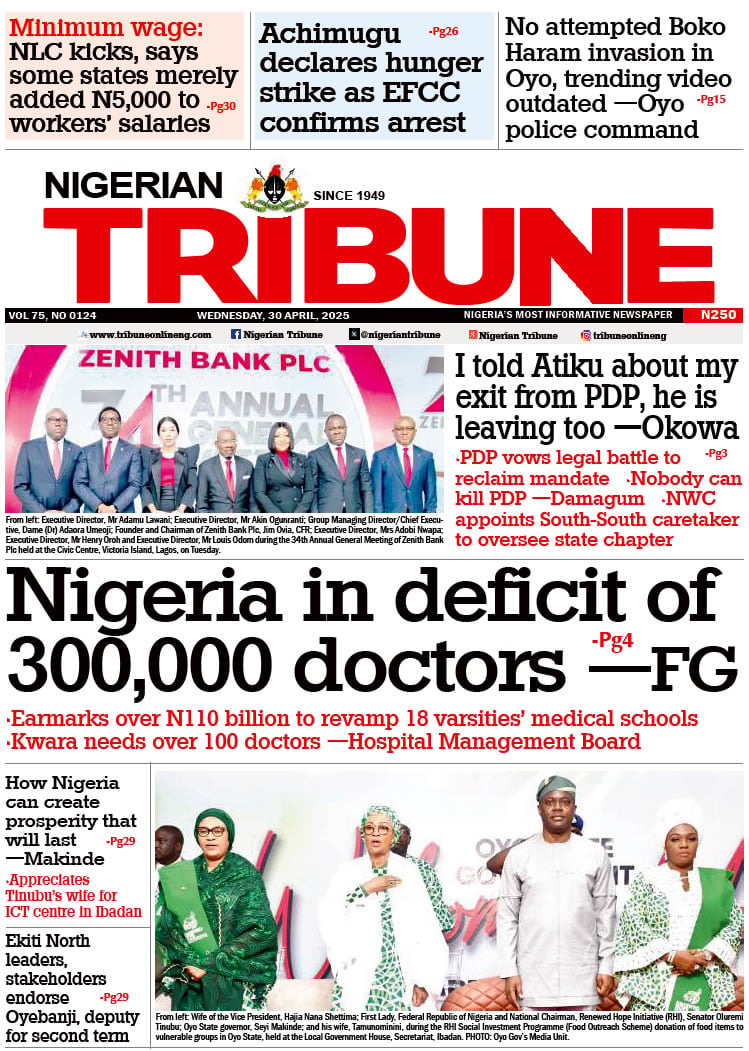While the government’s desire to develop infrastructure is appreciated, it is of grave concern that Nigeria’s debt has skyrocketed unprecedentedly in the last two years. According to the Debt Management Office (DMO), Federal Government’s domestic debt rose from N8.51 trillion in March 2015 to N11.97 trillion in March 2017, which is an increase of N3.46 trillion. Similarly, the state governments, over the last two years, amassed domestic debts totaling N1.27 trillion as their debt figure moved up from N1.69 trillion in 2015 to N2.96 trillion as of March 31, 2017. In the same period, external debt for both the federal and state governments also rose by $4.35 billion from $9.46 billion in 2015 to $13.81 at the moment. While individuals and institutions both within and outside the country have expressed concern over this, it does not seem to bother those in government. Accruing debts seem to give the government a thrill.
At the just-concluded World Bank/International Monetary Fund annual meetings in Washington DC, United States, the two organisations raised the issue of Nigeria’s rising debt profile, warning of the dire consequences of this in the light of the falling prices of crude oil, Nigeria’s main foreign exchange earner. The Finance Minister, Mrs Kemi Adeosun, however, pooh-poohed the warning at a press conference, saying the country’s debt to GDP ratio was still within a reasonable threshold. She added that the government would need to rack up more debts to enable it to deliver critical infrastructure.
At 19 per cent, Nigeria’s debt to GDP ratio is healthy but the real issue is the debt to revenue ratio, which is what actually determines the ability of the country to repay its debts. According to Mrs Gloria Joseph-Raji, a World Bank’s Senior Economist, Nigeria’s debt to revenue went up from 35 per cent in 2015 to 60 per cent in 2016. If without the new foreign debts Nigeria currently expends 66 per cent of its total revenue on debt servicing, leaving just 34 per cent for both capital and recurrent expenditure, what sense does it make to take more debts? What economic sense does it make to borrow more to offset existing debts?
Rather than taking the easy route of borrowing without any sound plan to offset same, we are of the opinion that the government should cut down on its recurrent expenditure. There is nothing about the current government structure that reflects the poor state of the economy. Those in government are living larger than life; government bureaucracy is expanding even while the economy is contrasting. Every major government official has a long retinue of aides who also have a retinue of assistants, all of who draw salaries and allowances from the government. The convoys of government officials have not trimmed down to reflect the country’s economic realities. So, how will expenses not outstrip revenue?
Rather than sinking the nation’s future via the avarice and incompetence of today in the name of raising funds (loan) to build infrastructure, the government should go into partnership with the private sector that will build the infrastructure and recoup the investment from the yields of such infrastructure over a period of time. That is the trend all over the world and it is much safer than staking the future of the country on a loan whose prudent management cannot be guaranteed. Stacking up debts without a corresponding robust and well-thought-out strategy for repayment is an invitation to national disaster.






